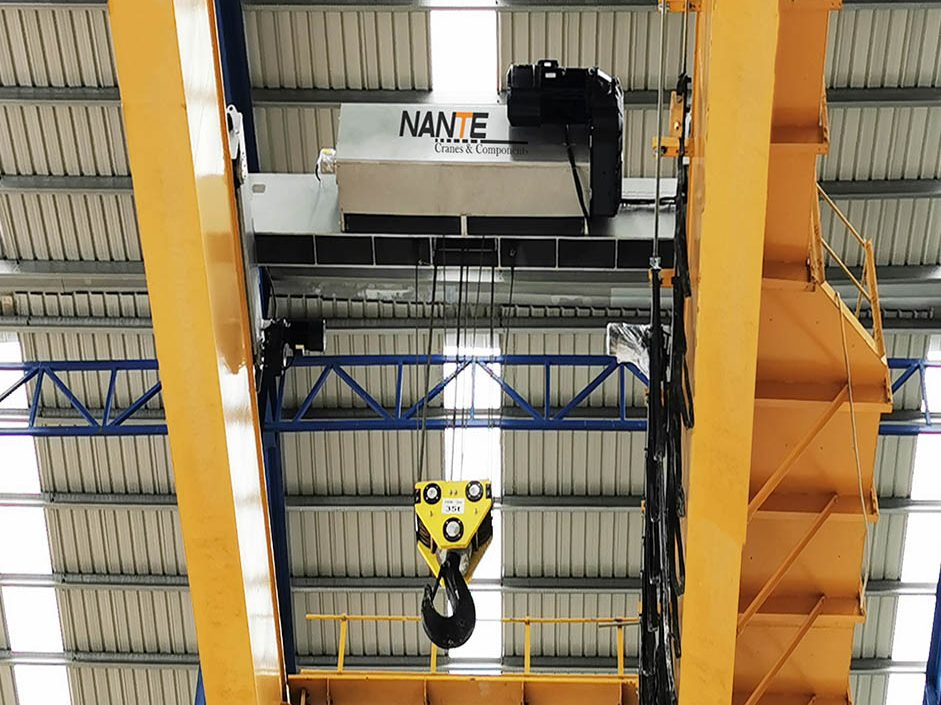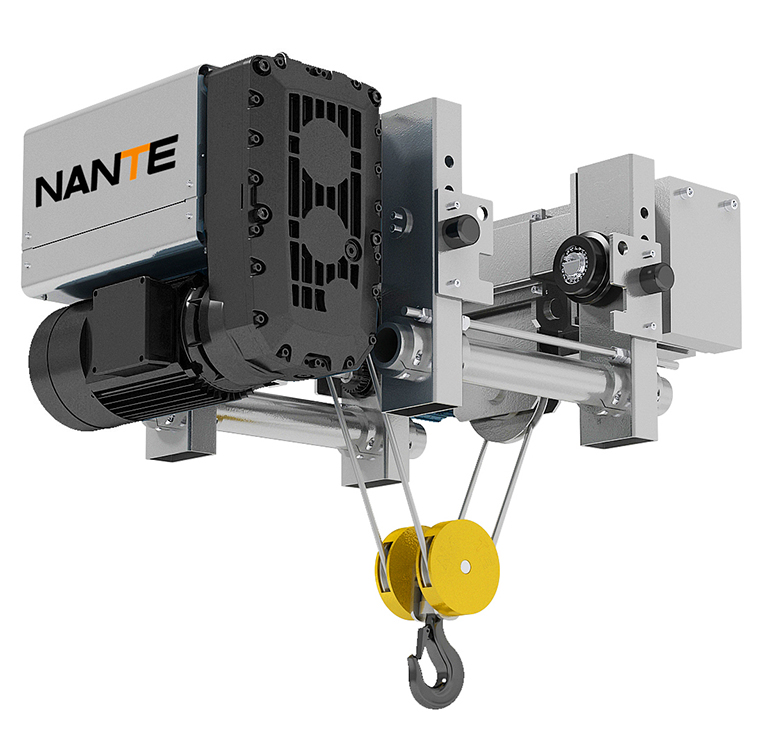Understanding the Key Differences Between a Boom and a Hoist
Date: 2024-05-07 Share:
Breaking Down the Basics
Defining a Boom
When it comes to construction and lifting equipment, a boom refers to an extendable arm or mast that is used to position or lift objects. The mechanics of a boom involve hydraulic systems that enable vertical and horizontal movement, providing flexibility in reaching various heights and distances. Common types of booms include articulating booms, which have multiple sections that allow for precise positioning, and telescopic booms, which extend telescopically for increased reach.
Understanding a Hoist
In contrast, a hoist is a device used for lifting or lowering heavy loads with the help of a drum or lift-wheel around which rope or chain wraps. Hoists work by utilizing mechanical power to facilitate vertical lifting, making them essential in industrial and construction settings. Varieties of hoists include electric chain hoists, wire rope hoists, and manual chain hoists, each designed for specific load capacities and operational requirements.
By understanding the mechanics of booms and the functionality of hoists, one can better appreciate their distinct roles in various applications.

What is the difference between a boom and a hoist?
Structural Differences
Design and Functionality
When comparing the structural differences between a boom and a hoist, it’s essential to consider their design and functionality. A boom typically consists of an extendable arm or mast, often equipped with hydraulic systems for vertical and horizontal movement. On the other hand, a hoist features a drum or lift-wheel around which rope or chain wraps, providing mechanical power for vertical lifting. The design of a boom emphasizes reach and positioning capabilities, while a hoist prioritizes vertical lifting efficiency.
Load Capacity and Range of Motion
Another significant structural difference lies in the load capacity and range of motion of these lifting mechanisms. Booms are designed to handle varying loads at different heights and distances, offering flexibility in maneuvering objects within construction sites or industrial settings. In contrast, hoists are specifically engineered to efficiently lift heavy loads vertically, with different types tailored to specific load capacities. Understanding these structural disparities is crucial when determining the most suitable equipment for specific lifting tasks.
Operational Differences
Control Mechanisms
Operational disparities between booms and hoists encompass their control mechanisms. Booms are often operated using control panels that enable precise adjustments for height, reach, and positioning. In contrast, hoists are typically controlled through user-friendly interfaces that facilitate smooth vertical lifting operations. These distinct control mechanisms cater to the unique functionalities of each equipment type, ensuring optimal performance in diverse lifting scenarios.
Safety Features
Furthermore, operational variances extend to the safety features integrated into booms and hoists. Booms are equipped with safety systems that focus on stability during extended reach or positioning maneuvers, ensuring secure operations at elevated heights. Hoists prioritize safety measures related to load-bearing capacities, rope/chain integrity, and secure attachment points for heavy loads during vertical lifting activities. Understanding these operational disparities is crucial for maintaining safe working environments across various industries.
Exploring the Uses of Booms and Hoists
Booms and hoists play pivotal roles in diverse industries, each catering to specific applications and operational requirements. Understanding their distinct uses is essential for selecting the most suitable equipment for various tasks.
Applications of Booms
Booms find extensive utilization across different sectors, contributing to enhanced efficiency and safety in various applications:
Construction and Maintenance
Booms are widely employed in construction and maintenance activities, facilitating elevated access for tasks such as building inspections, window installations, and exterior repairs. Their extendable arms enable workers to reach heights with ease, enhancing productivity while ensuring safety during elevated operations.
Utility and Farming Tasks
In utility and farming settings, booms are utilized for tasks such as power line maintenance, tree trimming, and fruit picking. The flexibility of booms allows workers to maneuver through challenging terrain while efficiently completing tasks at varying heights.
Where Hoists Shine
Hoists are indispensable in industries that require efficient vertical lifting capabilities, offering reliable performance in specialized applications:
Industrial Lifting
Hoists are extensively used in industrial settings for lifting heavy machinery components, assembling large structures, or transporting heavy materials within confined spaces. Their vertical lifting prowess streamlines operations while ensuring precision and safety.
Entertainment Industry Uses
In the entertainment industry, hoists are instrumental for rigging stage equipment, suspending lighting fixtures, and elevating props during performances. The controlled vertical movement provided by hoists contributes to seamless production setups while prioritizing performer safety.
By recognizing the unique applications of booms and hoists across various industries, businesses can make informed decisions when selecting the most suitable equipment for their specific operational needs.
The Mechanics Behind Hoists
A hoist serves as an individualized lifting component that utilizes a system of pulleys and chain or wire rope to raise or lower a load. This mechanism allows for items to be moved throughout an operation without occupying valuable floorspace. It enables payloads to be transported overhead, enhancing worker safety and ergonomics while increasing operational performance and throughput.
Types of Hoists and Their Uses
There are different types of hoists tailored for specific applications. For instance, chain hoists are commonly used in warehouses and manufacturing facilities to lift heavy loads efficiently. On the other hand, wire rope hoists are suitable for more robust lifting requirements in industries such as mining and construction. The versatility of hoists makes them indispensable in various sectors including construction sites where they facilitate the vertical movement of materials with precision.

Exploring the World of Hoists
The Inner Workings of a Hoist
When examining the inner workings of a hoist, it becomes evident that its efficiency lies in the utilization of pulley systems. These systems are designed to reduce the amount of force required to lift heavy objects, making them an essential component in various industrial and construction applications. By distributing the load across multiple ropes and pulleys, hoists can effectively amplify the input force, allowing for the lifting of substantial weights with relative ease.
In addition to pulley systems, hoists come in different variations such as chain hoists and wire rope hoists. Chain hoists are commonly employed for lower capacity and lighter duty applications, making them ideal for projects in warehouses and manufacturing facilities. On the other hand, wire rope hoists are well-suited for more robust lifting requirements in industries such as mining and construction. Their ability to handle heavy loads makes them indispensable for various industrial operations.
Nante
Nante Crane, a leading crane and crane components designer and manufacturer in China, is dedicated to the research and development of lifting and material handling technologies. With a focus on innovation, Nante Crane continuously upgrades its technologies, products, solutions, and services to meet the evolving demands of industrial manufacturing 4.0 and safety upgrades.
Nante’s product range is comprehensive, catering to various customer demands under different conditions and requirements. Their main products include industrial cranes, offshore cranes, launching cranes, electric hoists, crane travel units, and mobile power supply systems. These products are known for their reliable and excellent performance and are widely used in more than 20 professional fields such as advanced manufacturing, logistics, paper making, mining and energy, automobiles and ships, metal processing, and aerospace.
Nante Crane has a strong commitment to quality, with a reliable quality management system in place. They design and manufacture various lifting equipment based on international standards, and their design and calculation can pass the review and verification from renowned third parties like BV, SGS, TUV, and RINA.
With a global sales and service network established through 150+ partners from 50+ countries and regions, Nante Crane provides full project life cycle services, including project investigation and consultation, design and manufacturing, transportation, installation, commissioning, and fast maintenance and technical support.
 English
English






